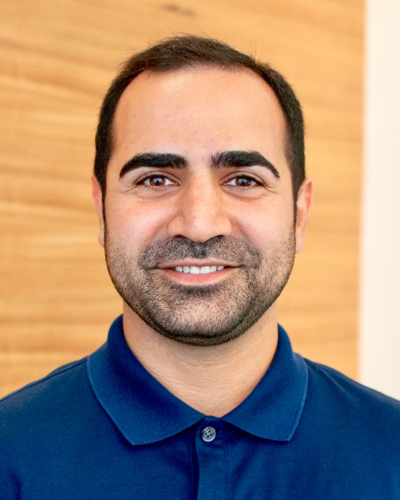August 19, 2025
ME Assistant Professor Mohammad Malakooti has received a National Science Foundation (NSF) CAREER award to advance sustainable manufacturing of flexible electronics.

Mohammad Malakooti
Industries such as packaging, electronics and health care rely on polymer foam materials — which are made up of gas bubbles — because they are inexpensive, lightweight, insulating and energy-absorbent. With the Faculty Early Career Development (CAREER) grant, which provides about $730,000 over five years, Malakooti’s iMatter Lab will research an innovative manufacturing method for selective or on-demand foaming of polymers and composites.
Researchers will use a laser to foam targeted regions of recyclable thermoplastic composites, allowing for more customization and improved material performance. The technique could also be more sustainable than current foaming methods. The lab will also develop outreach activities to engage Washington state K-12 students in learning about advanced materials and manufacturing.
“It’s an incredible honor to receive the prestigious NSF CAREER Award,” Malakooti says. “It validates the vision behind my research and my educational efforts, which have been shaped over years of mentoring students since my own time as a Ph.D. student. This recognition motivates our team to continue advancing knowledge that can make a lasting impact on both science and society.”
These composites could be used for a variety of applications, such as sensors and wearable electronics, that would benefit industries ranging from aerospace to medical devices. Below, Malakooti shares how the project got started and why it’s important.
What inspired this project?
Working on emerging technologies like stretchable electronics and wearable devices, I’ve seen a constant need for manufacturing methods that push the boundaries of material performance and design freedom. I also believe that future devices should be designed with their end-of-life in mind, making it possible to recycle or reuse their materials. These combined challenges inspired me to explore new ways of processing advanced materials so they can be engineered for specific performance needs. For this project, I am focusing on recyclable polymer composites and energy-efficient manufacturing methods that provide control over their microstructures and properties. Achieving these goals can transform how flexible electronics are designed, produced and eventually reclaimed.
How will you use a laser to create foaming in thermoplastic composites?
We use a focused laser beam to locally heat specific regions of gas-infused thermoplastic polymers and composites. This controlled heating creates a thermodynamic instability, nucleating cells that grow into a foam structure. It’s a complex multiphysics problem that we will study in depth. The high resolution of the laser is key to achieving on-demand, precise foaming with tailored microstructures and properties.
Why is selective, or on-demand, foaming important?
Selective foaming means creating foam only in specific areas of a material where it’s needed, rather than foaming the entire material evenly, which is typical in conventional foaming methods. On-demand foaming lets us control where cells, or tiny bubbles, nucleate and grow to form a porous structure.
Selective foaming is important because it allows us to tailor material properties exactly where they are needed. We can make some regions softer, more flexible, or create specific surface textures. Most importantly, it enables localized tuning of functional properties such as thermal and electrical conductivity. At the same time, this approach eliminates the need for hazardous chemicals used in current foaming methods, reduces material waste, and utilizes thermoplastic polymers that can be recycled and reused. It essentially makes electronics manufacturing both efficient and sustainable.
Why is this research important to you?
I’m driven by the creativity in research. My group turns ideas into tangible materials, devices and processes, and finds innovative ways to repurpose existing tools to solve technological bottlenecks. In this project, we’re using a laser system not for cutting or engraving as it’s typically used, but to engineer microstructures inside functional polymer composites. This approach opens new possibilities for designing materials with spatially tuned properties and enables us to use recyclable materials for applications such as printed electronics. The combination of reimagining what’s possible, exploring its potential and limitations, and creating something with real-world impact is what makes this work so meaningful to me.